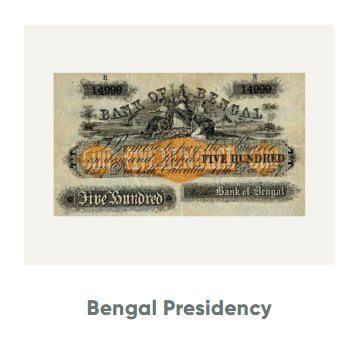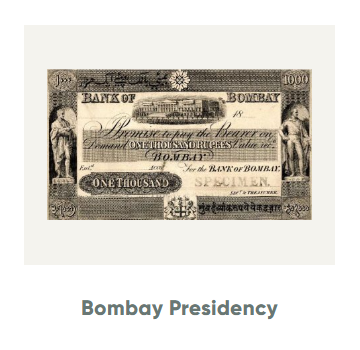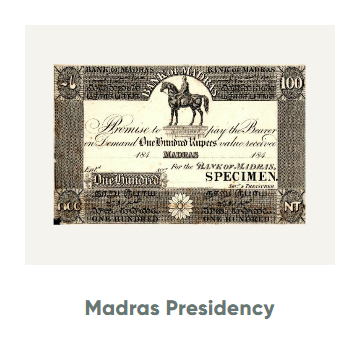Home / Exhibits at the Museum / Early Banknotes Of Presidency And Private Banks
Early Banknotes of Presidency and Private Banks: 1770-1861
In late 18th century, several joint-stock banks emerged in the actively mercantile Bengal
Presidency. The Bank of Hindostan, a private bank from the Bengal Presidency was amongst the first to issue banknotes followed by other Presidency banks of the Bank of Bengal and Bank of Bombay. The Asiatic Bank (1804) and the Madras Government Bank (1806) merged in 1843 to form the Bank of Madras.
The Bank of Bengal (Bengal Presidency), Bank of Bombay (Bombay Presidency) and Bank of Madras (Madras Presidency) were established under charters from the British East India Company and were inspired by English banks. The Commercial Bank, the Calcutta Bank, the Union Bank, the Bank of Western India, the Oriental Bank and the Commercial Bank of India also issued notes along similar lines.
In 1857, the governance of India passed from the East India Company to the British Crown and by the Act of 1861, the Government of India prohibited the Presidency banks from issuing currency notes.


